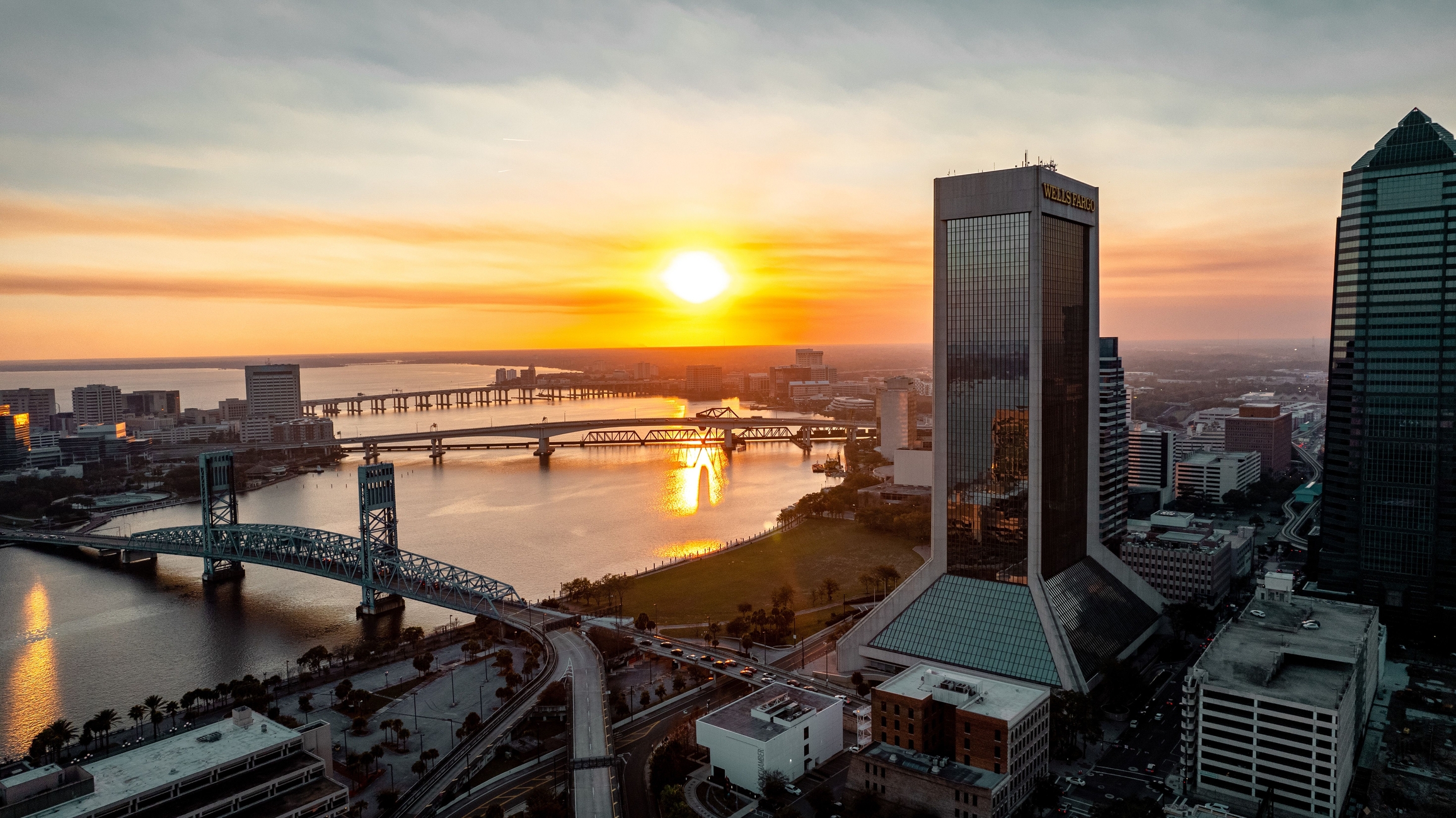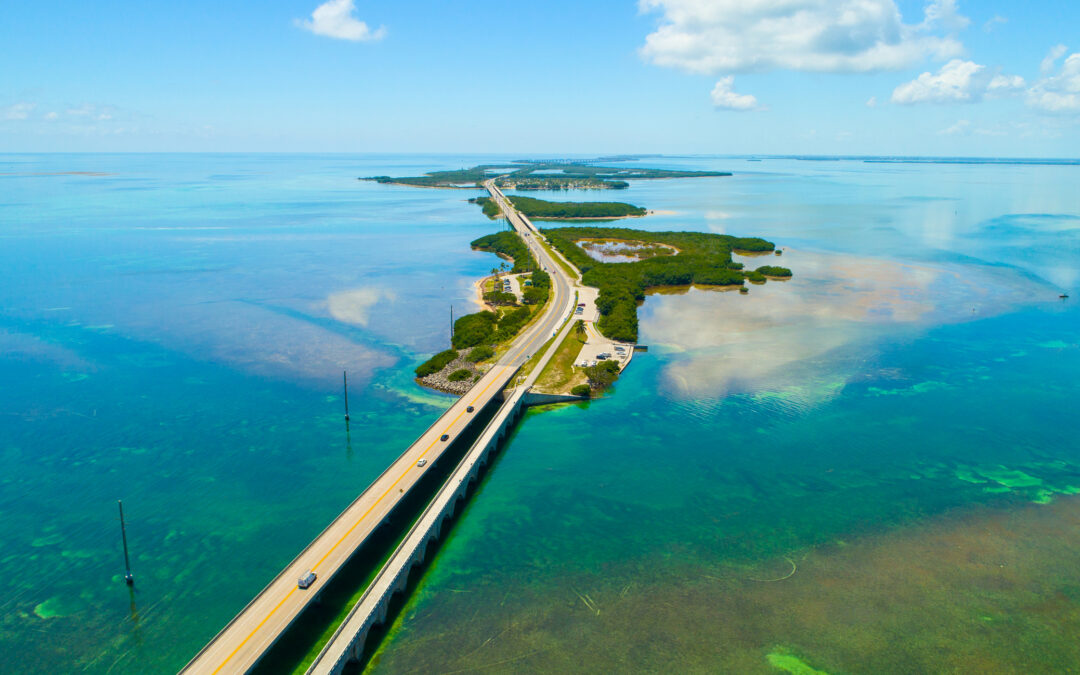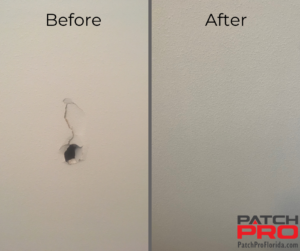The Sunshine State is covered in thousands of miles of waterways.
Obviously, with that much water, there needs to be a ton of bridges. Across the crystal clear coastline of Florida, these bridges make the lives of millions of residents and visitors easier, creating shortcuts through the watery landscape.
Sometimes, these views even make sitting in traffic seem not so bad.
These are The 10 Most Iconic Florida Bridges:
1. Seven Mile Bridge
Year Built: 1982
Construction Duration: 3 years
Length: 6.79 miles
Height: 65 feet at its highest point
Annual Traffic: Approximately 2 million cars
The longest bridge in the Florida Keys stretches from Marathon Key to the Key West. One bridge is for vehicular traffic; its neighbor, the older bridge, is known as the Knights Key-Pigeon Key-Moser Channel-Pacet Channel Bridge (phew… what a mouthful!) and is reserved exclusively for pedestrians and cyclists.
The bridge has been featured in several Hollywood movies, including Road House, True Lies, and 2 Fast 2 Furious.
2. Sunshine Skyway Bridge
Year Built: 1987
Construction Duration: 5 years
Length: 4.1 miles
Height: 430 feet above water
Annual Traffic: Around 20 million cars
Completed in 1986, the Sunshine Skyway Bridge is the world’s longest cable-stayed concrete bridge.
The pair of longways bridges consists of long beam causeways and a central tall cable-stayed bridge that moves from Lower Tampa Bay to connect Pinellas County to Manatee County.
3. Bridge of Lions
Year Built: 1927 (Reconstruction completed in 2010)
Construction Duration: Initial build 2 years, reconstruction 4 years
Length: 1,545 feet
Height: 30 feet
Annual Traffic: About 10 million cars
The coolest bridge in the state might also be the prettiest. In St. Augustine, two immaculate white marble lions stand guard on the bridge on the west side.
Completed in 1927, during the extravagant land boom in our state, the Bridge of Lions was purposefully designed to resemble a work of art, emphasized by its double-leaf bascule design.
In 2015, two additional granite lions were installed on the east side of the bridge; it takes about a mile to cross the bridge and back to see all four lions.
4. Rickenbacker Causeway
Year Built: 1947
Construction Duration: 4 years
Length: 5.4 miles
Height: 78 feet
Annual Traffic: 15 million cars
The Rickenbacker Causeway includes several distinct segments and stretches 3.6 miles in overall length. A toll facility is near the western terminus at Brickell Avenue. Although northbound traffic isn’t charged any tolls, southbound traffic from Miami must pay a toll of $2.25.
The multimodal corridor also serves as the busiest bicycling and running route in Miami-Dade County.
 5. Acosta Bridge
5. Acosta Bridge
Year Built: 1921 (Reconstructed in 1994)
Construction Duration: Original build 2 years, reconstruction 3 years
Length: 1,645 feet
Height: 75 feet
Annual Traffic: Around 8 million cars
In Jacksonville, on a fixed span across the St. Johns River, the Acosta Bridge hosts six lanes of SR 13 with the two-track Jacksonville Skyway in the median.
Originally named the St. Johns River Bridge, the causeway was later renamed after the Jacksonville city commissioner who greened the project.
LED lights, available to be programmed in any color, recently replaced neon tubes that were installed 20+ years ago.
6. MacArthur Causeway
Year Built: 1942
Construction Duration: 3 years
Length: 3.7 miles
Height: 65 feet
Annual Traffic: Approximately 25 million cars
One of several bridges in the Miami area, this six-lane causeway connects downtown Miami to South Beach through the Biscayne Bay. The singular roadway bridges the mainland to the bay neighborhoods of Hibiscus Island, Palm Island, and Star Island.
Standing at 68 feet, the bridge extends for 3.5 miles.
In 1942, the bridge was named in honor of World War II General Douglas MacArthur.
7. Julia Tuttle Causeway
Year Built: 1959
Construction Duration: 2 years
Length: 4.4 miles
Height: 45 feet
Annual Traffic: Close to 20 million cars
This 2.5 miles of slabs and girders hosts close to 20 million vehicles annually. As a part of Interstate 195, travelers cross the Julia Tuttle Causeway over Biscayne Bay. Although bike lanes are on the shoulder, pedestrian crossing is still prohibited.
Infamously, the popular band the Bee Gee’s claimed the rhythm of their tour bus on the road inspired the song “Jive Talking.”
8. Venetian Causeway
Year Built: 1927 (Renovated multiple times)
Construction Duration: Initial build 3 years
Length: 2.5 miles
Height: 12 feet
Annual Traffic: 12 million cars
Stretching across Biscayne Bay between Miami and Miami Beach, the Venetian Causeway consists of four lanes and processes two-way traffic.
Since 1927, the Venetian Causeway has been renovated numerous times; its most recent design phase is expected to be completed by the end of the year. Construction advertisement is estimated for early 2026.
It’s also a very popular route for runners, who can enjoy the view from the Intracoastal waterway.
9. John Ringling Causeway
Year Built: 1926 (Rebuilt 2003)
Construction Duration: Initial build 3 years, rebuild 2 years
Length: 1,548 feet
Height: 65 feet
Annual Traffic: 10 million cars
Who knew there was a bridge named after the Ringling Brothers Circus in Sarasota?
Rebuilt twice since 1926, the bridge was replaced with a four-lane drawbridge to accommodate traffic demands, followed by the high-span bridge we see today at the start of the 21st century.
The bridge is often lit to celebrate holidays, including rainbows to honor Pride month and red, white, and blue for the Fourth of July.
10. Hathaway Bridge
Year Built: 1950 (Current bridge in 2004)
Construction Duration: Original build 3 years, new bridge 4 years
Length: 10,496 feet
Height: 65 feet
Annual Traffic: 8 million cars
The construction of the Hathaway Bridge over St. Andrew Bay, connecting Panama City to Panama City beach on the Gulf Coast of the Sunshine State, took 544 segments.
There are 14 Hathaway bridge spans, all sunk in 1988. The last span is arguably the most explored in the area, where divers can see abundant Caribbean fish species in the Gulf of Mexico.
From canals and rivers to ocean vistas and barrier islands, there are an abundance of concrete structures that permit a picturesque view of Florida. When you cross a bridge or two locally, make sure to take in the scenic panoramic views of our favorite state.



You must be logged in to post a comment.